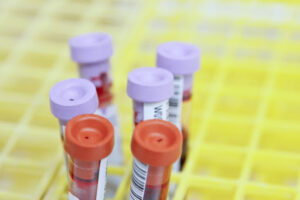A real hype in the wellness scene and a popular treatment for athletes. Cryotherapy utilizing a so-called cryosauna has become increasingly popular in recent years.
But what exactly is a cryosauna? How does this cryogenic application work, and what cryogenic infrastructure is needed to supply the sauna with liquid nitrogen?
Cryotherapy
Before we get into how the cryosauna works, first, a little background. After all, the cryosauna is relatively new. Still, treating the body and soul with low temperatures certainly is not.
Several sources even describe how the ancient Egyptians were already using cold therapies to treat various injuries and health problems.
In the 70s, cryotherapy became increasingly well known, mainly because Japan’s Dr. Toshiro Yamauchi employed the technique as pain relief for patients with rheumatoid arthritis. His research demonstrated that patients with various pain conditions benefit from treatment with extreme cold.
Nowadays, cryotherapy is used worldwide for much more than just pain relief. The therapy is also said to provide muscle recovery, healing various injuries, strengthening the immune system, boosting metabolism, and much more.
What is a cryosauna?
A cryosauna can come in different configurations. For example:
- A cabin cooled with liquid nitrogen to cool the whole body – except the head.
- A cabin cooled with electric cooling to cool the entire body – including the head.
- Special applications to cool only parts of the body, using liquid nitrogen or electric cooling techniques.
The temperature of a cryosauna is usually between -85°C and -140°C. By immersing your body for one to three minutes in a booth at these extremely low temperatures, the body (the most outer layer of skin) is cooled at lightning speed.
The above types of cryosauna all have their advantages and disadvantages. To name a few examples:
- Electrically cooled cryosaunas can cool the entire body, including the head. With liquid nitrogen cryosaunas, the head protrudes above the compartment.
- The cost of a liquid nitrogen cryosauna is lower than that of most electric cryosaunas. This applies to both purchase costs and ongoing (electricity) costs.
- Liquid nitrogen cryosaunas are generally smaller and easier to install. This makes this option attractive for gyms and wellness centers with limited space.
Which type is the most suitable depends entirely on the individual situation. However, in this blog, we focus – because of our background and expertise – on the cryosauna that uses liquid nitrogen.

A liquid nitrogen cryosauna
Cryosaunas use gaseous nitrogen to rapidly cool the sauna chamber to the desired temperature (down to -150°C). The cold vapor is evenly distributed throughout the chamber and emanates from a dewar containing liquid nitrogen.
How this dewar connects to the cabin depends on the design. Many cryotherapy providers do not have a fixed liquid nitrogen supply tank on site. They, therefore, usually partner with a provider of cryogenic liquids, who delivers and connects the dewar when needed.
How much liquid nitrogen a cryosauna uses per session varies, but it is usually around 3 to 5 liters. An on-site dewar can hold a few hundred liters of liquid nitrogen and thus lasts for quite a few treatments.

Cryogenic infrastructure
What exactly do you need for a liquid nitrogen cryosauna to function properly? The infrastructure for a cryosauna is relatively simple. In most cases, it includes the following components:Ventilated area
A well-ventilated area. Sometimes (mainly for smaller rooms), the provider of liquid nitrogen will request the ventilation system to be improved. Too much nitrogen in the air can actually cause respiratory distress because cold nitrogen expands, displacing oxygen. To ensure that the area is safe, it is advisable to use an oxygen detector. This immediately alerts you when a room contains too little oxygen and potentially too much nitrogen.Vacuum-insulated dewar
A container or dewar containing liquid nitrogen. These vessels are vacuum insulated and equipped with the necessary features to pass liquid nitrogen at the proper pressure into the cryosauna, where it is then released in gaseous form. The nitrogen is released in a liquid state but immediately becomes gaseous due to the ambient temperature, which is many times higher. Usually, the dewar is placed next to the cryosauna, but there are cryosaunas with space for a small dewar placed inside the sauna. In this case, regular refilling from a larger dewar or storage vessel is required.Vacuum-insulated transfer lines
Vacuum-insulated transfer lines connect the dewar to the cryosauna. Often these are flexible pipes, so the sauna and dewar are not restricted to a fixed location in the building. Vacuum insulation is essential for the efficient and safe use of liquid nitrogen. Due to the double wall and vacuum environment contained in this form of insulation, heat is kept out of the system as much as possible, and the cryogenic liquid retains its optimum quality.Expert in cryogenic infrastructures
Be it cryogenic freezers, tunnel freezers for the food industry, particle accelerators in scientific research, cryogenic aircraft engine, or a cryosauna. At Demaco, we love the versatility of our profession. Our field of work is extremely broad, and our activities are highly specialized. We are experts in safely handling liquid nitrogen, setting up your infrastructure economically and efficiently, and supplying nitrogen to a cryosauna. We work very successfully with multiple providers of cryosaunas; we offer advice and provide (mostly flexible) vacuum-insulated transfer lines and additional cryogenic infrastructures. In 2022, we made a successful customer visit to Eissauna. To ensure this company’s cryosauna functions optimally, Demaco delivered a section of vacuum-insulated piping for the liquid nitrogen. An excellent cooperation, a satisfied customer, and a chance for our colleague Maurice to experience the positive effects of the sauna for himself.




